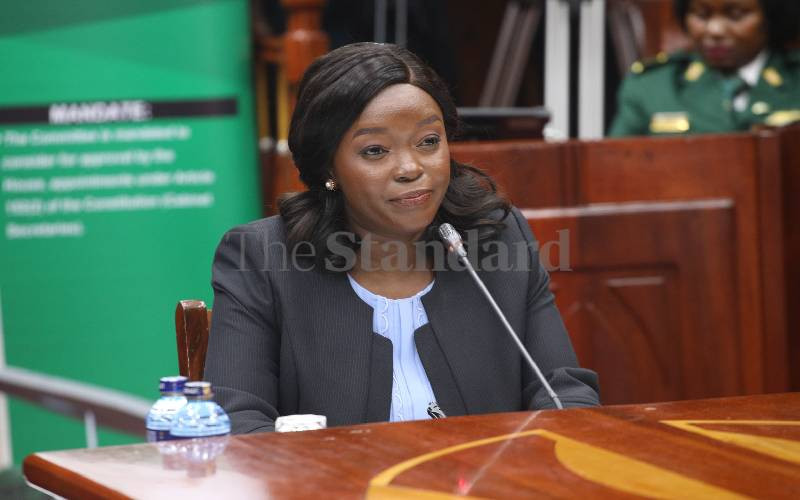 |
|
Thomas Cholmondeley (centre) is escorted from the court. |
By Waweru Mugo
Kenya: Among the issues that have shone the spotlight on Kenya’s ties with her former colonial master, the murder trials of Thomas Cholmondeley, a great-grandson of British aristocrat Lord Delamere, stands out.
Kenya seethed with rage when, in 2006, Cholmondeley shot and fatally wounded Robert Njoya, who was said to have ventured onto his vast Soysambu Ranch in Naivasha. A year earlier, he had killed Samson ole Sisina, an undercover ranger with the Kenya Wildlife Service.
Amid conflicting statements on how Sisina met his death, the case was dropped after the State said there was no evidence to sustain it. Cholmondeley claimed he shot the ranger in self-defence.
So, when he killed Njoya a year later, the country erupted in anger amid claims that he was killing Kenyans for sport. The matter brought to the fore the legacy of British colonial rule, which is laced with tales of official land grabbing and cruelty.
First, the Delamere family is among those that retained large parcels of land after Kenya’s independence in 1963. The ranch adds up to a whopping 48,000 acres – many Kenyans remain landless to date.
Colonial policy
Delamere’s name was, therefore, synonymous with Kenya’s colonisation and loss of land to whites. Cholmondeley was the finance manager of the vast estate left by the aristocrats.
The settlers were beneficiaries of a land-grabbing frenzy following which Africans were herded to reserves as the whites gathered up the best land.
They settled on farming – raising thousands of animals on ranches and managing large tea and coffee plantations – as Africans wallowed in poor settlements. Today, the legacy of that colonial policy lives on.
Big companies, some owned by descendants of settlers and wealthy Kenyans, own huge ranches.
The Cholmondeley case brought back those bitter memories. “The Delameres have always treated Kenyans with contempt. They stole our land in the first place and now they think we are part of the wildlife,” said William ole Ntimama, a former MP and Cabinet minister.
In the Sisina case, Cholmondeley said he thought the ranger was robbing his staff when he opened fire and shot him fatally. He did not deny shooting the ranger. There were claims of high-level interference by Government officials to have him released.
In the second case, he said he saw four poachers on his farm carrying a dead impala. The men had dogs, which he tried to kill, but accidentally shot Njoya instead, he said.
A murder charge was soon reduced to manslaughter despite an outcry that someone was trying to let him off with a light sentence. The trial, one of the most sensational since independence, lasted three years after which Justice Muga Apondi handed him eight months in jail. A manslaughter charge can attract a life sentence.
Stay informed. Subscribe to our newsletter
Cholmondeley had also performed first aid on Njoya soon after he shot him, the court heard.
He spent the three years in Kamiti Maximum Security Prison, one of Nairobi’s toughest jails.
There was renewed outrage over the sentence seen as too light. But more surprises lay in wait.
On the morning of October 23, 2009, a prison van drove him out and to the Karen home of a friend. He was a free man, released after serving only five months.
It was followed by another outcry. Calls flooded morning shows on radio and television stations, with Kenyans saying that justice was, after all, not colour blind. Many said he had been set free because he was white, because he was a rich man, and because Kenya did not wish to upset ties with Britain.
Prison officials said he had been released for good conduct and it was routine to set inmates free when they have less than six months of their sentence left.
“It is a requirement that a prisoner can be released if he or she is remaining with less than six months to complete their jail terms and this is the case with Tom,” said Isaiah Osugo, the commissioner of prisons.
 The Standard Group Plc is a
multi-media organization with investments in media platforms spanning newspaper
print operations, television, radio broadcasting, digital and online services. The
Standard Group is recognized as a leading multi-media house in Kenya with a key
influence in matters of national and international interest.
The Standard Group Plc is a
multi-media organization with investments in media platforms spanning newspaper
print operations, television, radio broadcasting, digital and online services. The
Standard Group is recognized as a leading multi-media house in Kenya with a key
influence in matters of national and international interest.
 The Standard Group Plc is a
multi-media organization with investments in media platforms spanning newspaper
print operations, television, radio broadcasting, digital and online services. The
Standard Group is recognized as a leading multi-media house in Kenya with a key
influence in matters of national and international interest.
The Standard Group Plc is a
multi-media organization with investments in media platforms spanning newspaper
print operations, television, radio broadcasting, digital and online services. The
Standard Group is recognized as a leading multi-media house in Kenya with a key
influence in matters of national and international interest.






